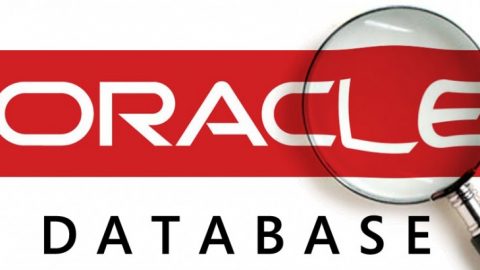While Microsoft stacks the cloud, Google readies its next play
The battle for cloud-based enterprise productivity and back office apps is heating up.
All the traditional enterprise system vendors (e.g., SAP, Oracle, Salesforce, IBM) have a cloud strategy and product offerings. But not all vendors have the same vision. Recently, Google and Microsoft announced enterprise-focused offerings to lure clients to their cloud-based suites. Google and Microsoft will be fierce competitors in this space, but coming from differing backgrounds, they have divergent offerings.
Google for its part has always been a massive cloud player. But its focus on the consumer — even as it tried to lure businesses over the past couple of years to its web-based Office competing product, G-Suite, and its collaboration suite, Hangouts — has been limited in success. This is primarily due to the fact that its enterprise-focused features and functions were modest at best, and the appeal for its solution was most notable in SMB. And Google lacked a true client app, relying instead on Chromebooks as a delivery mechanism.
But in the past 12-18 months, Google has focused on bringing about a transition in its enterprise solutions offerings. It has hired a number of execs with heavy enterprise solutions expertise, led by industry veteran Diane Greene. The company is transforming the “enterprise lite” offerings into full enterprise-class, mission-critical solutions. Although Google still has a way to go to make the full transition, the recent Google Next conference showed its new direction.
G-Suite (now called just Google Cloud) is built on Google’s Cloud Platform. Google added key enterprise-friendly features with an emphasis on enhanced security and identity management, such as data loss prevention, multi-factor authentication, automatic data discovery and information redacting of sensitive data, key management, strongly encrypted Google Vault file synching, and e-discovery for compliance requirements.
Google is updating its collaboration features as well to be much more competitive with Slack and similar workgroup tools, with Hangouts Chat and Hangouts Meets. It’s even developed its own chip, called Titan, to allow an established root of trust in future cloud-based processing components, much like ARM does with its TrustZone technology.
While much of this expertise is built on Google’s extensive experience in managing its own internal enterprise requirements for its 75,000-plus employees (including 700 internal engineers focused on security for its public and private offerings), a good deal of this new focus is being brought about by its maturing vision of what organizations need to take Google seriously as an enterprise provider. The maturity of its new enterprise management team is showing.
Microsoft has a different strategy. It has been and continues to be a primary provider of corporate infrastructure for the vast majority of enterprises, with a huge installed base of on-premises solutions in productivity (Office), servers (Windows Server), CRM (Dynamics/LinkedIn) and collaboration (Lync/Skype). As companies migrated to the cloud, Microsoft’s Office 365 suite gave companies a feeling of comfort in knowing they were simply moving from on-prem to cloud deployment — although Office 365 isn’t quite equivalent to the end user device deployed version. And Azure was a relatively easy cloud migration of on-prem servers.
Microsoft has spent a good deal of time and effort in getting its installed base to adopt Azure as its cloud platform. Indeed, for corporate infrastructure needs, Azure leads both Google and Amazon AWS in presence in large companies (although it has a harder time competing in large cloud-oriented, consumer-focused solutions where AWS dominates). Microsoft has been focused on the enterprise for many years, so it knows well what organizations need in the way of security, manageability and services. This is one of its key competitive strengths.
Recently, Microsoft announced a new version of Azure Stack (TP3, which will be available later this year). What’s important about this announcement is that it extends the ability of companies to make the choice to transparently place their cloud-based apps in the public or in a private cloud. Azure Stack offers compatibility in app development, tools and management capabilities, as well as ecosystem add-ons. And Microsoft has partnered with systems vendors like HP Enterprise, Lenovo and Cisco to offer turnkey on-prem turnkey solutions.
While competitors like Google, AWS and Salesforce concentrate on moving companies to full cloud deployment, the reality is that I expect 75%-85% of enterprises to have on-prem private cloud deployments in place for at least the next three to five years, often in parallel with public cloud solutions. Microsoft’s ability to offer a hybrid solution, either hosted on-prem or in their Azure cloud, gives Microsoft a competitive advantage over pure public cloud providers like AWS and Google.
Where Google does have an advantage is in leveraging the vast cloud resources and solutions it has put in place and has been refining over many years, honed for consumer needs but now being updated and repurposed for enterprise. Further, many corporate end users are familiar with Google apps from using them as consumers.
Nevertheless, transitioning to Google Suite apps from an Office environment may be a hard sell to many companies that require consistency and full compatibility (and that’s Office 365’s key advantage even with some of its own incompatibilities). Further, the need for a hybrid cloud strategy by most enterprises provides Microsoft a key opportunity.
So what’s the bottom line? I expect many more enterprises to consider Google Cloud as an alternative to Microsoft, given Google’s expanding deployments/scale, new enterprise features, aggressive pricing and widespread adoption and familiarity by users on a personal basis. This will put increasing competitive pressure on Microsoft in pricing (which it has already started to react to) and functionality.
But not having an on-premises equivalent to Azure Stack puts Google (and others) at a competitive disadvantage that will be hard to overcome. While I am very positive on Google’s new enterprise direction, and expect it to continue to expand, out-competing Microsoft at many companies will be a challenge.
By Jack Gold, source by ComputerWorld
Visit ICT Hardware website to get more info about Microsoft Products









